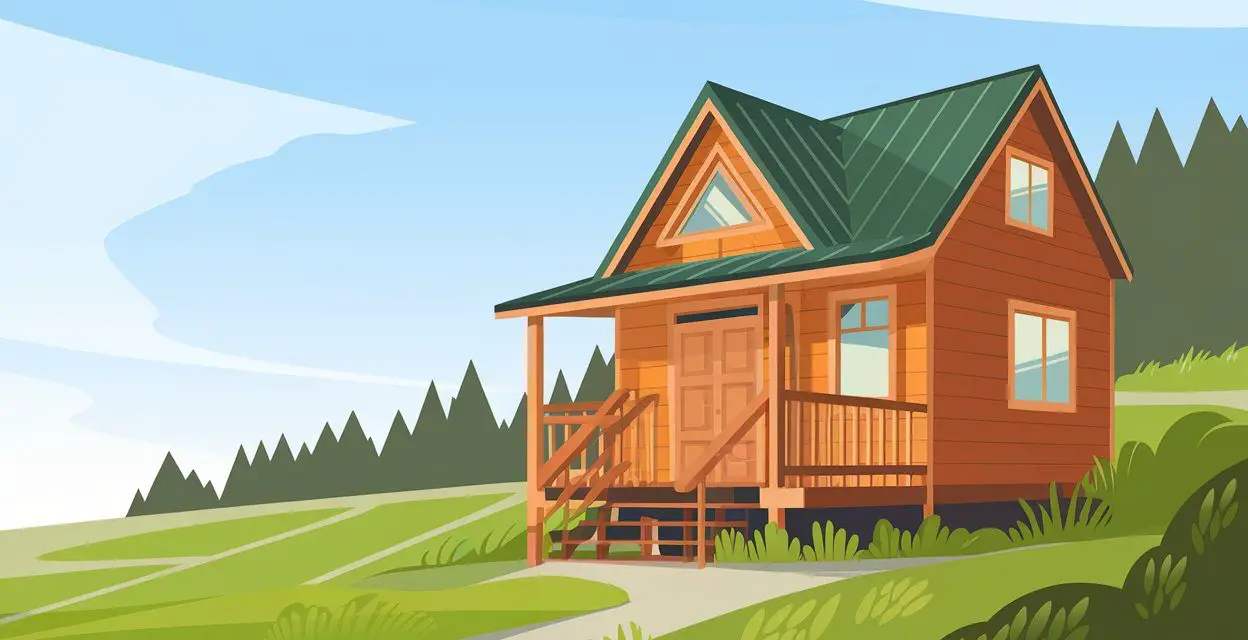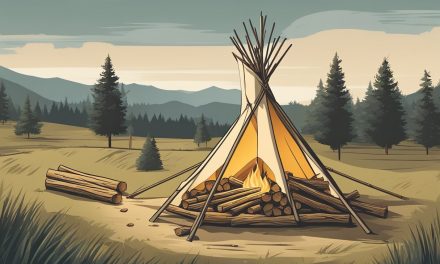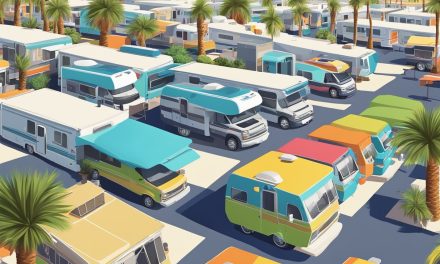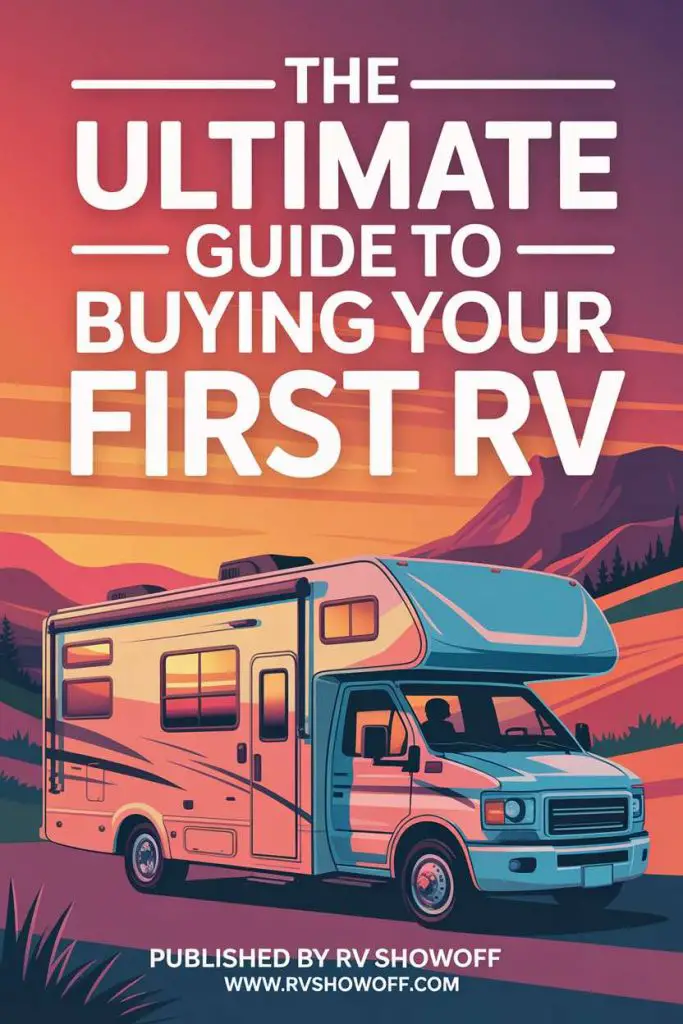Would you like to save this article?
Are tiny homes allowed in RV parks? You might face this question while looking for a spot to park your small house. Some rv parks accept tiny homes, but rules can change by city or county.
This guide will help you understand the regulations and show you smart parking options. Stick around, there’s more to learn!
Key Takeaways
- Tiny homes are sometimes allowed in RV parks, but rules change based on city and county laws. Always check local zoning and building codes before parking your tiny house.
- Many RV parks accept tiny homes on wheels (THOWs) or park model homes. Some require certification like RVIA for safety and legal reasons.
- Short-term stays at RV parks cost about $40-$60 per night. Long-term options may need a background check, lease agreement, or proof of certification.
- Not all RV parks allow tiny homes. You might face restrictions or higher costs in some places. Email the park ahead of time to ask about their rules.
- Other options include joining a tiny home community or leasing private land. These choices can offer more freedom with fewer rules than most RV parks.
Zoning and Legal Requirements for Tiny Homes in RV Parks
You might think setting up your tiny house in an rv park is as simple as parking your motorhome at a campsite, but local rules can throw a wrench in the works. These laws and codes decide if you can connect to plumbing systems, use sewer hook-ups, or even stay for long-term parking—so always check before rolling in with your recreational vehicle.
Understanding local zoning laws
Local zoning ordinances act like the rulebook for land use. City planners and county staff decide what types of homes you can park, live in, or build on a piece of property. Many RV parks work within strict rules set by these zoning laws.
These rules may say no to tiny houses, especially since tiny house living often falls into a gray area outside traditional trailer or mobile home categories.
Confusion comes up often because local governments sort recreational vehicles, motorhomes, caravan parks, and even small cottages differently from tiny houses on wheels. Some areas only allow certain plumbing systems or require hookups to sewer lines that meet specific codes.
Ask your city’s code official before settling in with your tiny house at any rv park; one phone call could save months of hassle over permits or parking rights.
Building codes and certification standards
Tiny homes often fall under specific building codes. These include CSA Z240 RV in Canada and NFPA 1192 in the USA. These codes help ensure safety and standards for recreational vehicles, including tiny houses on wheels.
Many builders follow these guidelines even if there isn’t a special code just for tiny homes.
You should know that local laws vary greatly. This means what’s allowed in one area might not be okay in another. When looking at tiny house living, check with your local government about any certification requirements or building permits needed to park your home in an RV park or other areas.
Keeping on top of these rules can save you a lot of hassle down the road!
Types of Tiny Homes Allowed in RV Parks
Many RV parks welcome tiny homes, but not all types are allowed. Tiny houses on wheels and park model homes are popular choices for these spots. A house on wheels is like a big trailer that you can move around easily.
Park models look more like traditional homes but still fit the RV standards. You’ll need to check each park’s rules before you set up camp!
Tiny homes on wheels (THOWs)
Tiny homes on wheels, or THOWs, are a popular option in RV parks. These homes come built on trailers, making them easy to transport. They offer the charm of tiny house living with the added perk of mobility.
You can park your THOW just about anywhere that allows it.
Most parks welcome these homes, but they must meet local zoning laws and building codes. The size and design matter too; some parks have specific rules about what type of tiny home is allowed.
Some THOWs can even serve as legal recreational vehicles (RVs). Mint Tiny Homes provides options that fit into this category quite well. Next up are park model homes and their role in RV communities.
Park model homes
Park model homes are a popular choice for tiny house living. They often range from 200 to 400 square feet in size, making them cozy and efficient. These homes are built on a trailer frame, but they differ from traditional RVs.
Park models usually come with more features and better construction standards.
In RV parks, park model homes can be an excellent option. They have the comfort of a small home while still fitting into the lifestyle of an RV community. Mint Tiny Homes, for instance, offer legal models that comply with regulations.
Many people find that park model homes provide a lower-cost alternative to traditional cabins without losing charm or function.
Key Factors for Acceptance in RV Parks
When you’re looking to park your tiny home, a few things matter. Parks often have rules about how long you can stay and what types of homes they accept. Always check those specific guidelines before you plan your visit.
Long-term vs. short-term parking options
You’ll notice pretty fast that RV parks handle tiny homes on wheels and park model homes differently, depending on parking length and local rules. Here’s a quick breakdown to sort out the long-term game from those short, fun stops.
| Feature | Short-Term Parking | Long-Term Parking |
|---|---|---|
| Duration | 1 night to a few weeks | 1 month or more, often with monthly rent |
| Accepted Units | Most RV parks allow both RVs and tiny homes on wheels | Some parks limit spots to RVs or park model homes; always ask first |
| Average Cost | $40-$60 per night | Monthly rent, varies by location; often cheaper per day than nightly rates |
| Check-in Process | Quick, similar to checking into a motel | May require background check, lease agreement, proof of certification |
| Local Zoning | Usually flexible for short stays, especially for travel | Often stricter; city ordinances may limit long-term stays or types of homes allowed |
| Utilities | Water, power, sewer included short-term | Utilities may be metered separately for long-term guests |
| Suggested Questions | “What’s your nightly rate? Do you allow tiny homes on wheels?” | “Do you offer long-term parking for RVs and park model homes?” |
| Entities Mentioned | RVs, THOWs, park model homes, city ordinances | Monthly rent, background check, certification, RV park rules |
Meeting park-specific requirements
Each RV park has its own rules. Some parks allow tiny homes, while others do not. It is important to check these specific requirements. You’ll want to know if they accept tiny homes on wheels or park model homes.
Many parks may ask for RVIA certification for your tiny home. This ensures your home meets certain standards. Having this certification can ease the acceptance process in a new RV community.
Don’t forget to email the park about their rules and keep those messages as proof of your inquiries!
Alternatives to RV Parks for Tiny Homes
Tiny homes have other options besides RV parks. You might consider tiny home communities or leasing private land. These choices can offer more freedom and less hassle than traditional RV parks.
Whether you want a friendly neighborhood vibe or peace on your land, there’s a spot for you!
Tiny home communities
Tiny home communities are great options for those looking to live small. These places often provide stable, long-term environments where owners can feel at home. You won’t need to set up utilities, which is a big plus.
That makes it easier and cheaper to move in.
You can find rental or purchase lot options in these communities. Fees may apply for maintenance or administration but many offer good amenities like dog parks and gardens. Living here means you get extra peace of mind while enjoying a friendly community vibe!
Private land leasing
Leasing private land can be a good option for tiny home living. You might find a nice piece of land where you can set up your tiny house. In many cases, this gives you more freedom than staying in an RV park.
You will have control over your space—your home, landscaping, and privacy all belong to you.
However, buying or leasing land comes with some costs. Expect high initial expenses for the purchase and legal work. Property taxes will also apply yearly. Despite these challenges, private land leasing offers scenic views and long-term affordability that may be hard to beat in traditional RV communities or campsites.
Challenges and Restrictions Tiny Home Owners May Face
Tiny home owners often face challenges with acceptance in RV parks. Not every park allows tiny homes, and some may say no based on looks or design. Local laws can change from town to town, adding more confusion.
A tiny house that seems perfect in one area might be a big problem down the road.
Without proper permits, you could face fines or even removal from the park. It’s vital to understand both zoning laws and building codes wherever you want to settle down. These rules can affect everything about your tiny home living experience, so stay informed! Now, let’s check out some tips for successfully integrating tiny homes into RV parks next!
Tips for Successfully Integrating Tiny Homes into RV Parks
Integrating a tiny home into an RV park can be tricky but rewarding. Here are some helpful tips to make it smoother.
- Contact the RV park ahead of time. Ask, “Do you offer long-term parking for RVs and park model homes?” This will help you understand your options.
- Ensure your tiny home has RVIA certification. Many parks require this to meet safety and building codes.
- Provide a picture of your tiny home when applying to a park. A clear image helps them see what they’re getting.
- Check local zoning laws before moving in. Some areas have strict rules about where tiny homes can go.
- Be aware of the average costs at RV parks, which range from $40-$60 per night for sites; plan your budget accordingly.
- Understand the difference between short-term and long-term parking options. Long-term stays often have different rules and fees compared to short visits.
- Follow any specific requirements set by the park management; these might include landscaping or utilities setups that align with their standards.
These tips pave the way for making sure your tiny home fits right in at an RV park, as well as avoiding common issues down the line.
Conclusion
Tiny homes bring new possibilities for living. You can find them in RV parks, but rules vary by location. Some parks welcome tiny houses on wheels; others prefer park model homes. Research is key before you decide where to park your tiny home, so take the time to explore options like tiny home communities or private land leases.
With careful planning and a little creativity, you’ll set up your cozy space in no time!
FAQs
1. Can I park my tiny house in an RV park?
You can, but not every RV community welcomes tiny homes. Some parks only allow certified recreational vehicles. Others accept both small houses and traditional campers. Always check the rules before you roll up.
2. What amenities do RV parks offer for tiny house living?
RV park amenities vary a lot. Some places have showers, laundry spots, and even swimming pools. Others might just give you water hookups and a patch of grass to call home.
3. Is long-term parking allowed for tiny houses in most RV parks?
Long-term parking is sometimes possible, but not everywhere lets you stay all year round with your little dwelling on wheels. Rules change from one spot to the next; some treat it like musical chairs—move along after a while.
4. What if I want more freedom than an RV park offers?
If strict rules cramp your style, try dispersed camping outside regular rv parks instead of sticking to crowded rows of trailers or cabins; that way, you get space and fewer neighbors peeking over the fence.






